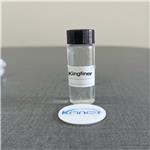Aroma
Penetrating and powerful, oily-green, lemony-fresh odor with some resemblance to that
of Citral, but overall harsher, not as sweet and
not as natural in its notes.
Powerful lemony, but also somewhat "metallic" and not expressly sweet taste - in
dilutions below 5 ppm. It should be noted
that this material has a poorer effect in
rncidified aqueous medium than the effect
obtained with Citral under similar conditions.
Chemical Properties
Almost colorless or very pale yellowish oily
liquid. B.P. 222°C. Sp.Gr. 0,87.
Practically insoluble in water, soluble in
alcohol and oils.
Occurrence
Has apparently not been reported to occur in nature.
Uses
Geranyl Nitrite, is a substituted terpenoid odorant with a fruity odor quality. It is one of the most potent cyclase stimulators.
Preparation
From geranialoxime with acetic anhydride (Arctander. 1969).
Production Methods
3,7-Dimethyl-2,6-octadienenitrile can be produced from:
1) Geranialoxime with Acetic anhydride.
2) Geranyl chloride and Sodium cyanide.
Flammability and Explosibility
Non flammable
Metabolism
The toxicity of organic cyanides appears to depend, in almost every case, on whether they can be metabolized in the body to the free cyanide ion, CN~, and on the rate and extent of this conversion and the rate of detoxication of cyanide to thiocyanate. Alkyl cyanides appear to be metabolized in the body chiefly by formation of hydrogen cyanide plus the acid with one less carbon atom (Williams, 1959).






